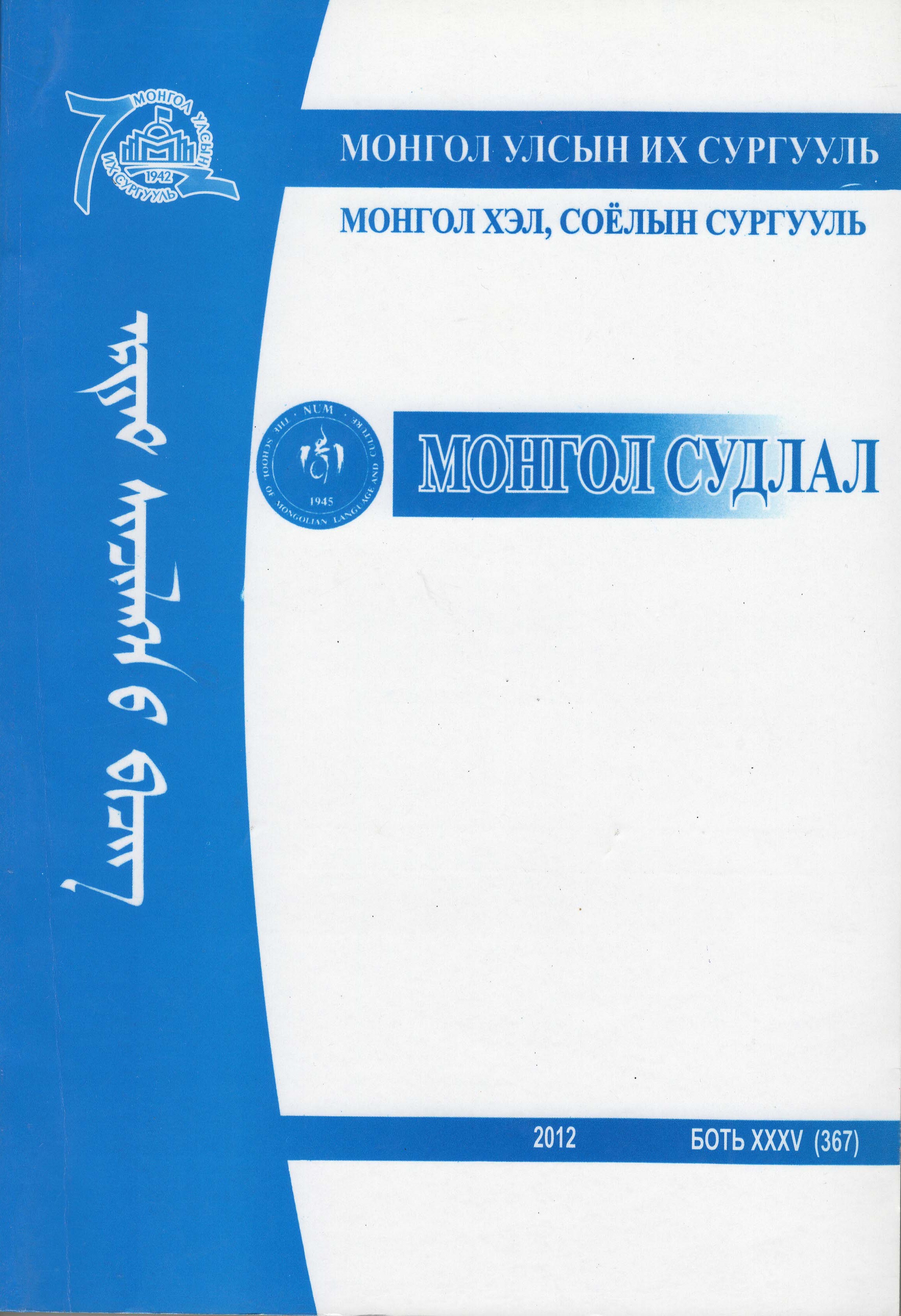Хэлний нөхөх, үл нөхөх байрлалын тухай асуудалд
Contribution to the Complementary and Noncomplementary Distribution in language
Abstract
In this paper the author tries to give a new definition of complementary and noncomplementary distribution in language. Up to the present it was understood amongst linguists as the infra given definition by Professor H.A.Glaeson. an eminent American scholar; “... Two elements can be considered as the same morpheme if (I) they have some common range of meaning, and (2) they are in complementary distribution conditioned by some phonologic feature.
Two elements are said to be in complementary distribution if each occurs in certain environments in which the other never occurs - that is, if there are no environments in which both occur../’.
The author, having studied the above definition thoroughly, found out that in the definition the entire attention was paid solely to the mutually exclusive feature of the two elements, not taking into account their complementary relationship. So the author, considering the above- mentioned definition inadequate, gives his own definition: two elements can be considered as the same phoneme or morpheme if they are in complementary distribution; they are different phonemes or morphemes if they are in non-complementary distribution.
Two elements are said to in complementary distribution, if each is mutually exclusive at the same time mutually complementary (if we use the Niels Bohr’s complementary principle in linguistics), and in non-complementary distribution, if each is mutually exclusive (in form or position or in both), but not mutually complementary.
According to this definition the phoneme, morpheme, word, sentence, their classes and sub-classes - all are the general, the abstract, the middle condition of the two oppositions which are mutually exclusive and at the same time mutually complementary, and quite the reverse, the oppositions are the particular, concrete manifestation of the phoneme, morpheme, word, sentence or their classes and sub-classes respectively.
In this connection linguistic phenomena are not an exception to the general law of universe, A linguistic unit and its class are in hierarical structure, for example phoneme, allophone, suballophone and thephoneme class; morpheme, allomorph, sub-allomorph, and morpheme class, morpheme sub-class; word, allolog, word class and word sub-class. They are in binary principle as well; phoneme or morpheme consists of allophones or allomorphs, in turn, each allophone or allomorph consists of sub-allophones or sub-allomorphs.
Therefore at the phoneme level phonemes are mutually noncomplementary, general, abstract, whole, butat the phoneme class level phonemes are mutually complementary, particular, concrete, parts of a whole; at the morpheme level morphemes are mutually non- complementary, general, abstract, whole, but at the morpheme class level morphemes are mutually complementary, particular, concrete, parts of a whole. So the author has come to the conclusion that the principle of complementary and non-complementary distribution is a relative phenomenon which occurs in concrete relations.





